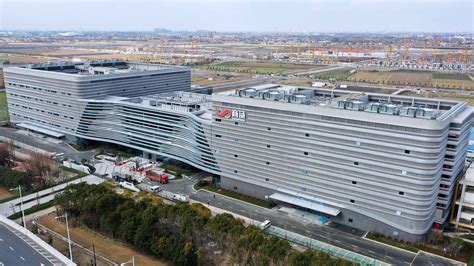China’s rapid expansion in artificial intelligence (AI) infrastructure has hit a roadblock, raising concerns about an imminent market crash. The country’s ambitious plans to become a global AI leader led to the construction of numerous data centers at a staggering cost. However, despite significant investments from both public and private sectors, many of these facilities are now sitting idle.
Building Boom Turns Bust
The MIT Technology Review revealed that China embarked on constructing hundreds of data centers to bolster its AI capabilities. Between 2023 and 2024, billions of dollars poured into this endeavor with the expectation that the demand for GPU rentals would skyrocket. Unfortunately, reality painted a different picture as the uptake fell short of projections, leaving operators grappling to stay afloat.
The initial zeal driving this infrastructure surge was fueled by lofty aspirations set by the government. Eager to position China as an AI powerhouse, authorities expedited the development of data centers. Over 500 projects were announced nationwide, with approximately 150 completed by the end of 2024 according to state-linked sources. Despite this flurry of activity, reports suggest that up to 80% of the new computing capacity remains unused.
Location Woes and GPU Sell-Offs
One key issue highlighted in the report is the mismatch between data center locations and operational requirements. Facilities situated in regions like central and western China enjoyed cheaper electricity but struggled to meet latency needs. In cities such as Zhengzhou, operators went as far as offering free compute vouchers in a bid to attract users.
Facing dwindling prospects for long-term clients, some developers resorted to selling off GPUs originally intended for these centers. Xiao Li, a data center project manager cited in the review, noted a stark shift in market dynamics where sellers outnumbered buyers significantly.
Should this surplus capacity flood the broader market, it could exacerbate an already saturated sector leading to plummeting prices and increased competition among data center developers.
The DeepSeek Disruption
The emergence of DeepSeek further complicated matters within China’s AI landscape. Launched in January 2025 with its R1 open-source reasoning model boasting performance comparable to ChatGPT o1 but at reduced costs, DeepSeek redirected focus towards real-time inference over traditional model training activities.
Most data centers established during the boom phase were tailored for large-scale training rather than catering to low-latency demands essential for real-time reasoning tasks. This paradigm shift reshaped priorities within the industry causing early investors in data centers to readjust their expectations drastically.
Despite facing challenges posed by oversupply issues and shifting technological trends favoring efficiency over scale, Chinese governmental support for AI initiatives remains steadfast. Major players like Alibaba and ByteDance continue announcing substantial investments reiterating their commitment towards fostering innovation within this space even though early adopters face uncertainties regarding ROI realization amidst tepid demand scenarios.



Leave feedback about this